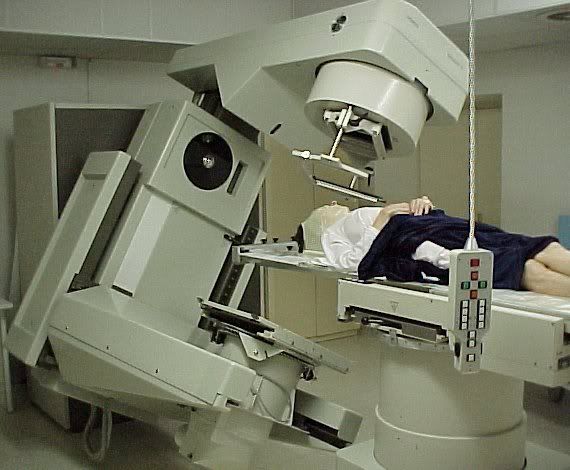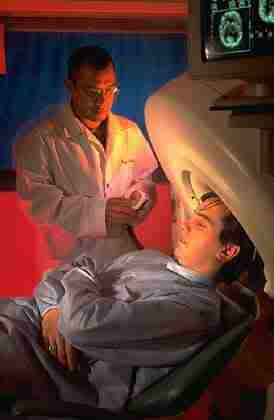Inverted Papillomas of the Prostatic Urethra.
Inverted papillomas are rare urothelial neoplasms predominantly seen in the urinary bladder, where they account for 1.0% to 2.2% of neoplasms.Although there are sporadic reports of inverted papilloma originating in the prostatic urethra, no previous systematic studies of inverted papilloma at this site have been undertaken. Furthermore, there are conflicting reports with inverted papilloma regarding the significance of atypia, risk of malignant transformation, risk of recurrence, and relationship to urothelial carcinoma elsewhere in the genitourinary tract. Consequently, the clinical behavior, outcomes, and management of these neoplasms remain unclear. We evaluated a large series of inverted papillomas of the prostatic urethra to better define their clinicopathologic features and biologic potential.
DISCUSSION
Clinical and Cystoscopic Features
Inverted urothelial papillomas are seldom seen in the prostatic urethra with an estimated incidence of 3.6% to 4.2% of all inverted papillomas. Previous descriptions of inverted papilloma at this site are limited to single case reports or inclusion within larger series of bladder inverted papilloma and often lack clinicopathologic data unique to prostatic urethra. The mean age of 65.1 years (range: 30 to 89) in our patients is comparable to the mean age of 62 years (range: 40 to 72) in prior reports. Similarly, symptomatic presentations in our cohort and in those reported previously included hematuria, irritative symptoms, or urinary obstruction/retention with cystoscopic descriptions ranging from pedunculated, polypoid, and papillary to rare solid lesions.
However, the current series is the first report to highlight the incidental detection of inverted papilloma of the prostatic urethra as a common presentation, seen in over 50% of our patients. This scenario has only rarely been noted in prior reports. These included cases where inverted papillomas were diagnosed on prostate needle biopsy for elevated prostate-specific antigen [n=2] or radical prostatectomy specimens removed for adenocarcinoma of the prostate [n=4]. Not surprisingly, these latter 4 cases were small, ranging from 2.5 to 6 mm in largest dimension. Whereas 5 of the incidentally detected inverted papillomas presented with urinary retention/obstruction presumed secondary to BPH, it is possible that the patients' symptoms were due in part to the presence of inverted papilloma at this site.
Histopathologic Considerations
The spectrum of findings seen in usual inverted papilloma is well defined with endophytic growth of thin anastomosing cords of urothelium showing, in areas, attachment to the surface urothelium. Other features seen include peripheral palisading of nuclei, nonkeratinizing squamous metaplasia, urothelial streaming in the center of the cords, and microcyst formation. Less well documented and more controversial is the finding of cytologic atypia in inverted papilloma. Although bladder inverted papilloma with atypia have in the past been reported as “inverted papilloma with malignant features” or “malignant transformation of inverted papilloma,” a recent review by Broussard et al identified a series of inverted papilloma with classic architecture and cytology and focal atypia. These cases lacked the large, round, nonanastomosing urothelial nests within the lamina propria and the presence of more diffuse atypia and mitoses seen with urothelial carcinoma with inverted growth pattern. In the series by Broussard et al, classic inverted papilloma with focal atypia showed no evidence of recurrence or association with urothelial carcinoma.
The present study documents 5 novel cases showing focal atypia in inverted papilloma within the prostatic urethra, in the form of moderately atypical squamous features [n=4] or degenerative-appearing multinucleated giant cells in a background of squamous metaplasia [n=1]. Both of these patterns have been noted by Broussard et al in their series. Given the focal nature of these findings in otherwise classic inverted papillomas seen in our series, and their lack of association with urothelial carcinoma elsewhere and the absence of documented recurrence, we feel that these lesions are best classified as inverted papilloma with atypia and not as low-grade urothelial carcinoma with an inverted growth pattern.
The presence of rare true benign-appearing exophytic papillary fronds associated with classic inverted papilloma seen in 3 of our cases could still be considered within the spectrum of inverted papilloma or alternatively as “mixed exophytic and inverted urothelial papillomas.” In cases with classic inverted papilloma morphology and rare, exophytic benign-appearing fronds, we favor classification as inverted papilloma. The 3 cases in our series with these findings
(1) did not have the architectural pattern of inverted carcinoma (ie, no broad rounded inverted nests);
(2) had typical findings of inverted papilloma, including peripheral palisading of nuclei, urothelial streaming in the center of the cords, and microcyst formation;
(3) lacked cytologic atypia;(4) did not recur; and
(5) were not associated with subsequent urothelial carcinoma, in support of their benign nature.
Other entities entering into the differential diagnosis include florid proliferation of von Brunn nests and extensive urothelial metaplasia. The large, regularly shaped, and uniformly spaced nests seen in florid proliferation of von Brunn nests are in most instances easily distinguishable from the anastomosing cords of classic inverted papilloma. However, in some cases, there is overlap between the 2 entities and to an extent the distinction depends on how restricted one's definition of inverted papilloma is in terms of its architectural pattern. Especially in the renal pelvis and ureter we have seen such overlap cases; the multifocal nature of the process in these cases with areas having the appearance typical of florid proliferation of von Brunn nests favors a reactive process over inverted papilloma. Urothelial metaplasia, although not a concern in the bladder or upper urinary tract, may cause significant confusion in the prostatic urethra. When extensive, urothelial cells undermining prostatic secretory cells may simulate an inverted lesion.
Prognosis
Although previous reports of inverted papilloma of the prostatic urethra contain limited data regarding clinical follow-up, no recurrences of inverted papilloma at this site had been reported. In the current large study focused exclusively on inverted papilloma localized to the prostatic urethra, we found only 1 case of local “recurrence.” Although the possibility exists that the initial lesion was incompletely excised, we must conclude that benign inverted papilloma of the prostatic urethra may recur, although it does not convey a predisposition to malignant change at this site.
With regard to the association of inverted papilloma and urothelial carcinoma, a number of difficulties are evident from previous reports. Both Witjes et al and Cheng et al review inverted papillomas from all sites, documenting an association with prior, synchronous, or subsequent urothelial carcinomas in a minority of cases. However, both studies fail to document the location of those inverted papilloma associated with urothelial carcinoma. Similarly, in a study by Cheville et al, measuring ploidy, MIB-1 proliferative index, and p53 protein expression in inverted papilloma, the location of the lesions is not specified. In the latter study, the authors report 8 cases of inverted papilloma with prior (n=1), synchronous (n=6), or subsequent (n=1) development of noninvasive low-grade papillary urothelial neoplasms (either PUNLMP or low-grade papillary urothelial carcinoma). However, none of the markers studied was successful in predicting the association between inverted papilloma and other urothelial disease and none of their patients developed invasive urothelial carcinoma.
In the current study, we document negative histories of prior urothelial disease in all patients with inverted papilloma of the prostatic urethra. Two of our patients were diagnosed with high-grade urothelial carcinoma of the bladder synchronous to their inverted papilloma diagnosis. One patient had urothelial carcinoma invasive into the lamina propria and the other had high-grade urothelial carcinoma invading muscularis propria. Neither these patients nor any others developed urothelial carcinoma on follow-up. As neither the existing literature nor the current series has documented a single case of subsequent urothelial carcinoma after inverted papilloma of the prostatic urethra, there is little support for routine surveillance in this population. If urologists elect to follow these patients, the surveillance protocol should not be as frequent as the one suggested for urothelial carcinoma.
We conclude that inverted papillomas arising in the prostatic urethra are benign lesions that are commonly detected incidentally. Although focal atypia within an inverted papilloma and simultaneous occurrence of urothelial carcinoma elsewhere in the genitourinary tract may be observed, neither malignant transformation of inverted papilloma nor recurrence as a malignant lesion has been detected at this site.




0 Comments:
Post a Comment
<< Home